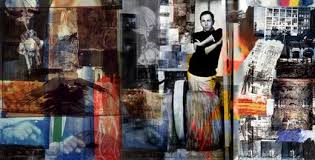For an artist, it isn’t enough to envision, create, and wallow in paint up to your elbows. You have to read about art. Indulge your muse. Suspend your free time thumbing through art magazines to expand your knowledge. You have to scour what’s out there for knowledge and inspiration.
I’ve been doing just that by reading B.A. Shapiro’s latest novel “The Muralist.” Now I can see her in person on Tuesday, January 12 at the Alliance for the Arts in Fort Myers. Shapiro will be there in person to sign her new book and discuss its plot and characters with attendees.
"From the author of the New York Times bestseller The Art Forger comes a thrilling new novel of art, history, love, and politics that traces the life and mysterious disappearance of a brilliant young artist on the eve of World War II."
"From the author of the New York Times bestseller The Art Forger comes a thrilling new novel of art, history, love, and politics that traces the life and mysterious disappearance of a brilliant young artist on the eve of World War II."
The
book keeps me turning pages. Of course, it’s about a time period that has always intrigued
me, and about the horrors that engulfed the entire world; but especially
the Jewish people. Hitler and his minions hated, pursued, and incinerated
millions of Jewish victims.
Shapiro not only covers the history well, but she knows art which makes the book that much more important on your lists of “must read.”
Many artists through the centuries have made political statements through their art, but most have avoided it as being too “in your face” or detrimental to their personal success. Some brave pioneers used art as a platform to voice their own strong feelings and to influence their audiences.
Shapiro not only covers the history well, but she knows art which makes the book that much more important on your lists of “must read.”
Many artists through the centuries have made political statements through their art, but most have avoided it as being too “in your face” or detrimental to their personal success. Some brave pioneers used art as a platform to voice their own strong feelings and to influence their audiences.
"Vik Muniz Photographer
and mixed-media artist best known for repurposing everyday materials for
intricate and heavily layered re-creations of canonical artworks. Muniz works
in a range of media, from trash to peanut butter and jelly, the latter used to
recreate Warhol’s famous Double Mona Lisa.
"Layered
appropriation is a consistent theme in Muniz’s work: in 2008, he undertook a
large-scale project in Brazil, photographing trash-pickers as figures from
emblematic paintings, such as Jacques-Louis David’s “Neoclassical
Death of Marat, and then recreating the photographs in large-scale arrangements
of trash. The project was documented in the 2010 film Waste Land in
an attempt to raise awareness for urban poverty. Muniz explained the work as a
“step away from the realm of fine art,” wanting instead to “change the lives of
people with the same materials they deal with every day.”
Others, like Thomas Hart Benton, passionately document history. War correspondents and artists fall into this category.
This is why some people become angry when others in later generations wish to
discredit or discard offensive images that were an actual part of history. Once
we destroy history, we chip away at our own identities. History should stand,
whether we like it or not.
Slavery is abhorrent to us now. It is a part of our history that we’re ashamed of and wish hadn't happened. But we can learn from our mistakes and vow never to make the same ones again. We can learn from the horrors of Hitler. The German people would like to bury this part of their past, but they haven’t. We and they must keep even the horrors of our past so that later generations will remember and perhaps be saved from repeating the same mistakes.
Slavery is abhorrent to us now. It is a part of our history that we’re ashamed of and wish hadn't happened. But we can learn from our mistakes and vow never to make the same ones again. We can learn from the horrors of Hitler. The German people would like to bury this part of their past, but they haven’t. We and they must keep even the horrors of our past so that later generations will remember and perhaps be saved from repeating the same mistakes.
Our country seems intent on following in Europe’s footsteps. But, instead, we should learn from them:
Socialism has brought financial ruin. A flood of refugees has changed the face of many major cities across the globe.
The whole world is teetering on the brink of disaster. We would be fools to ignore what has happened and think we know best, that it can’t happen here because we’re just too damn smart.
All it takes is a few concessions here, a blind eye there, a white lie behind closed doors, and a willingness to ignore the obvious right in front of our collective noses.
If an artist or a writer can awaken us to the truth, all the better.








No comments:
Post a Comment